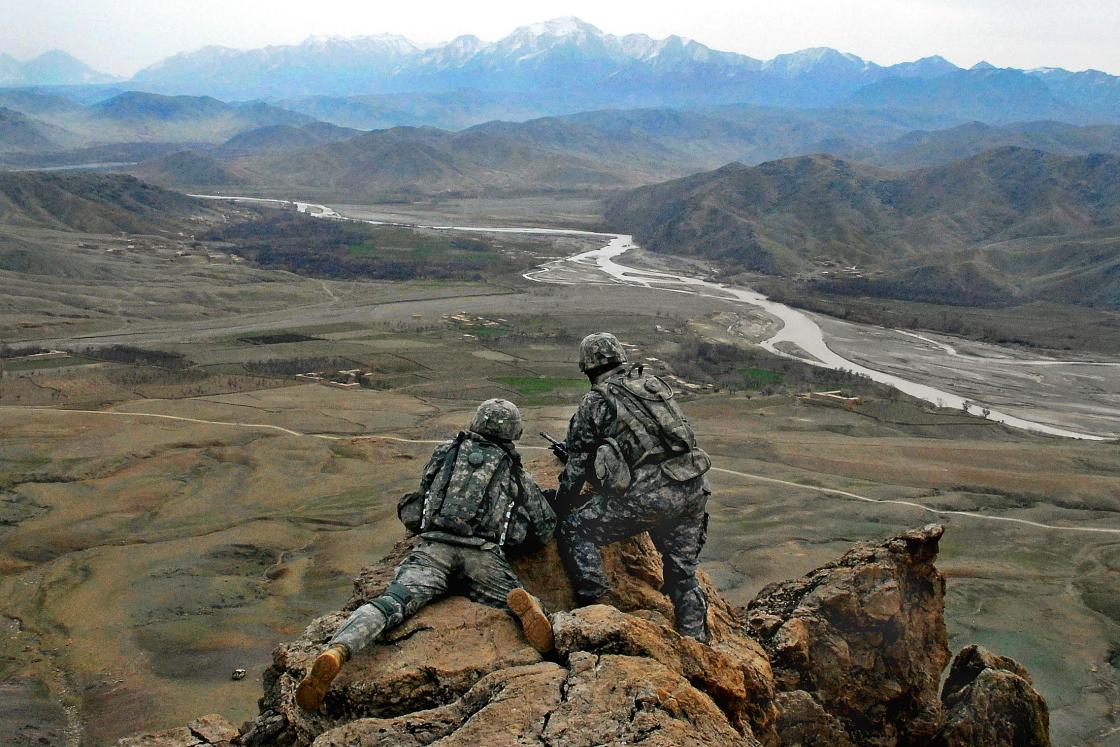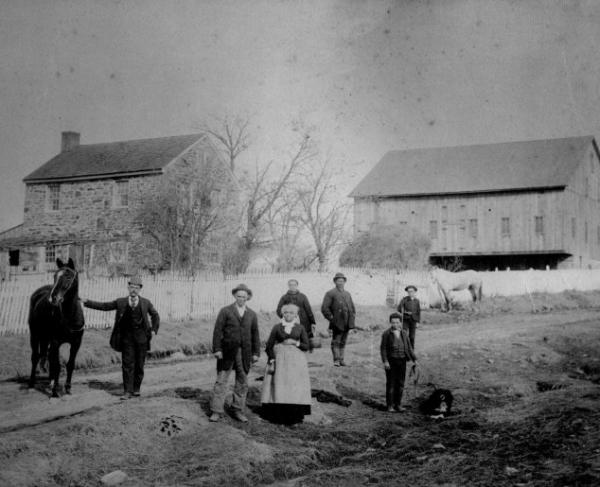"The Warriors" Regiment: 4th U.S. Infantry

The 4th United States Infantry Regiment or "The Warriors" has served the United States for over 200 years on numerous battlefields around the world.
Colonel John P. Boyd formed the 4th U.S. Infantry in May and June of 1808. After a period of training in New England, the regiment joined General William H. Harrison's expedition into the Northwest and fought at the climactic Battle of Tippecanoe in 1812.
During the War of 1812, the 4th Infantry served on the Canadian-Michigan frontier and surrendered with General William Hull's forces at Detroit in 1812. (The unit's colors were taken to Britain and are today on display in the Royal Welch Fusiliers Museum.) After a year of captivity in Quebec, the regiment was exchanged and posted to northern New York. In September 1814, the 4th Infantry fought at the Battle of Plattsburgh.
After the war's end in 1815, the U.S. Army consolidated its Regular infantry regiments from 44 to 8 (later 7). The 4th joined the 9th, 13th, 21st, 40th, and 46th to form the 5th Infantry; a new 4th Infantry came into existence with the combination of the 14th, 18th, 20th, 36th, and 38th Infantry Regiments; this added battle honors for Bladensburg and Fort McHenry to the regimental history. This new 4th Infantry Regiment quickly returned to frontier fighting, spending the two decades after the war engaged in what is now Florida, Georgia, and Alabama. The 4th fought several campaigns against the Seminoles, in one case losing a party under Lieutenant William Dade, who gave his name to Dade County, Florida.
After a period in Missouri, where Ulysses S. Grant joined the unit, the 4th Infantry fought in the War with Mexico. The regiment joined Major General Zachary Taylor's army in southern Texas and was in the thickest of the fighting during Taylor's first two victories at Palo Alto and Resaca de la Palma on May 8 and 9, 1846. The 4th accompanied Taylor's advance to Monterey later in the year, helping in the storming of that city. At one point during the Battle of Monterey, the regimental band seized a Mexican artillery battery and turned it on the enemy, earning the regiment the right to wear red cords in recognition. The 4th formed part of the forces sent to assist Major General Winfield Scott's Mexico City campaign in 1847, adding Vera Cruz, Molina del Rey, Cerro Gordo, Contreras, Churubusco, Puebla, Tlaxcala, and Chapultepec to the unit's battle honors.
After four years in the Northeast, the 4th Infantry returned to frontier duty in 1852 in the Pacific Northwest. Dispersed throughout the Oregon and Washington Territory, the regiment helped defend the areas of Seattle-Tacoma and Portland. Elements of the 4th Infantry also participated in the 1859 San Juan Island expedition into British Columbia, later famous as the "Pig War."
Upon the outbreak of the Civil War, the 4th Infantry reassembled in California to help keep the peace. In late summer of 1861, the unit sailed for Washington D.C., where it joined George Sykes' Regular Division in the Army of the Potomac's 5th Corps. The 4th saw action at every battle of Sykes' Division from the Peninsula Campaign through Gettysburg, after which it moved to New York City to help enforce the draft. In 1864, it was part of 9th Corps and fought with them through the Overland Campaign and the opening assaults on Petersburg. On June 22, 1864, General Grant made the regiment his headquarters guard at City Point, a duty which it performed for the rest of the war.

In 1866, the regiment returned to the frontier for virtually unbroken service there until 1898. The 4th was based for much of the time at Fort Fetterman in present-day Wyoming. Its most famous action was when two companies participated in General George Crook's expedition, which led to the Battle of the Rosebud on 17 June 1876.
During the War with Spain, the 4th Infantry deployed to Cuba and assisted in the capture of Santiago. Returning home in late 1898, it transferred to the Philippines the following year and fought in the Philippine Insurrection on Luzon. After three years of fighting, the unit then returned to the United States for a year, completing a circumnavigation of the globe, before going back to the Philippines for three more years of duty.

In the days before the United States entered World War I (1914-16), the 4th Infantry participated in the Vera Cruz expedition, camping in some of the same places it had in 1847. Upon U.S. entry into World War I in 1917, the 4th Infantry deployed on April 6, 1918 as part of the 3rd Infantry Division. Thrust into line in July 1918 as the Germans made a last bid to capture Paris, the regiment was one of the units that blunted the German drive after an epic four-day stand along the Marne River. Ever after, the 3rd Division has been known as the Rock of the Marne. The regiment also participated in the St. Mihiel and Argonne offensives before the war's end on November 11, 1918. After occupation duty in Germany, the regiment returned to the United States, eventually being posted to Alaska in 1927.
During World War II, the 4th Infantry helped defend Alaska. In 1943, the regiment assisted in the recapture of Attu from the Japanese. After a training assignment in the United States, the regiment was attached to the 25th Infantry Division for the planned invasion of Japan. The 4th then served with the occupation forces in Japan before being inactivated February 1, 1947.

On October 1, 1948, the 4th Infantry reactivated at Fort Lewis, Washington. After a series of training assignments, in 1963 the regiment again joined the 3d Infantry Division, now deployed in Germany. One battalion protected Pershing missile sites. The 4th remained in Germany with this division for the rest of the Cold War. In 1966, the 4th Infantry received its nickname The Warriors, in recognition of its long frontier service.

Elements of the regiment have deployed to Iraq and Afghanistan as part of the Global War on Terror. The 4th Infantry remains on active duty with one battalion in Germany and one attached to the 10th Mountain Division based at Fort Drum, New York.
The Civil War Trust has saved acreage at the following 4th Infantry battlefields: Gaines' Mill, Glendale, Malvern Hill, Manassas, Antietam, Fredericksburg, Chancellorsville, Gettysburg, Wilderness, Spotsylvania, North Anna, Cold Harbor, Petersburg, Appomattox Court House.



